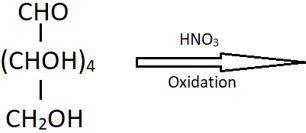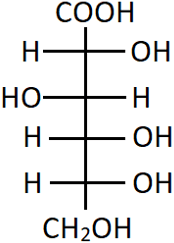This set of Class 12 Chemistry Chapter 14 Multiple Choice Questions & Answers (MCQs) focuses on “Biomolecules Carbohydrates – 2”.
1. Which of the following monosaccharides is a ketohexose?
a) Glucose
b) Galactose
c) Fructose
d) Mannose
View Answer
Explanation: Fructose is a monosaccharide that consists of six carbon atoms including a carbonyl carbon of a keto group within its chain. Glucose, galactose and mannose are examples of aldohexoses.
2. Identify the aldose form the following.
a) Arabinose
b) Xylulose
c) Ribulose
d) Sorbose
View Answer
Explanation: Arabinose consists of an aldehydic group (CHO) at the end of its chain which has a total of five carbon atoms (including the CHO group), hence it is an aldopentose. Xylulose, ribulose and sorbose are examples of ketoses.
3. Erythrulose is a/an _______
a) aldotetrose
b) aldoheptose
c) ketotetrose
d) ketoheptose
View Answer
Explanation: Erythrulose is a tetrose carbohydrate (because it contains 4 carbon atoms) with the formula C4H8O4. It has one ketone group and hence belongs to the ketose family.
4. Identify from the following pairs, a pair of aldoses.
a) Sorbose, allose
b) Mannose, tagatose
c) Psicose, gulose
d) Talose, idose
View Answer
Explanation: All the compounds mentioned are monosaccharides with the formula C6H12O6. However, allose, mannose, gulose, talose and idose are aldohexoses. Sorbose, tagatose and Psicose are aldoketoses.
5. Glucose is prepared commercially from the hydrolysis of ______ by boiling it with dilute H2SO4 at 393K under pressure.
a) starch
b) sucrose
c) galactose
d) dextrose
View Answer
Explanation: An aqueous solution of corn starch is acidified with dilute H2SO4. This is then heated under pressure (2-3 bar) for hydrolysis to take place. After this, the liquid is neutralised with sodium carbonate and the resulting solution is concentrated under reduced pressure to get glucose crystals. This process is also used for obtaining glucose from cellulose.
6. Identify ‘X’ in the following reaction.
![]()
a) sucrose
b) lactose
c) maltose
d) starch
View Answer
Explanation: When sucrose (C12H22O11) is boiled with dilute HCl or H2SO4 in an alcoholic solution, glucose and fructose are obtained in equal amounts. This is one the methods used for preparation of glucose.
7. The reaction of glucose with which of the following proves the presence of an aldehydic group?
a) Potassium iodide
b) Hydroxylamine
c) Bromine water
d) Acetic anhydride
View Answer
Explanation: On treatment with Br2 water, glucose gets oxidised to gluconic acid (which is a six-carbon carboxylic acid). This indicates that the carbonyl group is present as an aldehyde group.
8. Glucose on Fehling’s test gives ______
a) no reaction
b) silver mirror
c) red precipitate
d) pungent gas
View Answer
Explanation: Since glucose is readily oxidised, it acts as a strong reducing agent and reduces Fehling’s reagent to form a carboxylate compound (in the place of CHO group which gets oxidised) along with a red precipitate of Cu2O.
9. The reaction of glucose with hydrogen cyanide confirms the ______
a) straight chain structure of glucose
b) presence of a carbonyl group in glucose
c) presence of an aldehyde group in glucose
d) presence of a keto group in glucose
View Answer
Explanation: Glucose reacts with hydrogen cyanide to form glucose cyanohydrin, where the carbonyl double bond gets cleaved to form one C-OH bond and one C-CN bond. This indicates the presence of a carbonyl group but does not confirm whether it is an aldehydic or a keto group.
10. The reaction of glucose with acetic anhydride conforms the presence of how many hydroxy groups in glucose?
a) 3
b) 4
c) 5
d) 6
View Answer
Explanation: The reaction of glucose with (CH3CO)2O gives glucose pentaacetate, which has five acetyl groups in the structure. This reaction also proves that all the five OH groups are present at different carbon atoms, because of the stable nature of glucose.
11. Identify the product of the following reaction.

a) Gluconic acid
b) Glutaric acid
c) Glutamic acid
d) Glucaric acid
View Answer
Explanation: Strong oxidising agents like nitric acid oxidise both the terminal groups of glucose to give a dicarboxylic acid, saccharic acid, also known as glucaric acid. This reaction also indicates the presence of a primary alcoholic group. Gluconic acid also undergoes a similar reaction.
12. Glyceraldehyde is a carbohydrate.
a) True
b) False
View Answer
Explanation: Glyceraldehyde is the simplest of the common aldose monosaccharides. It is a triose monosaccharide with the formula C3H6O3. It consists of two hydroxy groups and one aldehydic group.
13. Identify the compound from its structure as derived from that given by Fischer.

a) Glucose
b) Gluconic acid
c) Saccharic acid
d) Sorbitol
View Answer
Explanation: Gluconic acid (as shown) is obtained when D-glucose is treated with bromine water, resulting in the oxidation of the aldehyde group to a carboxyl group. Gluconic acid on further oxidation gives saccharic acid.
14. The reaction of glucose with NH2OH gives _______
a) n-hexane
b) glucose oxime
c) glucose cyanohydrin
d) a gluconic acid
View Answer
Explanation: Glucose reacts with hydroxylamine to form an oxime of glucose, where a carbon-nitrogen double bond is formed (C=N-OH) in place of the CHO group. This reaction establishes the presence of a carbonyl group in glucose.
15. The ‘D’ in D-(+)-glucose represents its dextrorotatory behaviour.
a) True
b) False
View Answer
Explanation: The ‘D’ represents the correlation of the structure to that of (+)-glyceraldehyde, in which the OH attached to the carbon adjacent to the CH2OH is on the right-hand side of the chain. Likewise, when the OH of the last asymmetric carbon in glucose lies on the left-hand side of the chain, it is known as L-glucose.
Sanfoundry Global Education & Learning Series – Chemistry – Class 12.
To practice all chapters and topics of class 12 Chemistry, here is complete set of 1000+ Multiple Choice Questions and Answers.
If you find a mistake in question / option / answer, kindly take a screenshot and email to [email protected]
- Practice Class 12 - Physics MCQs
- Practice Class 12 - Biology MCQs
- Practice Class 11 - Chemistry MCQs
- Check Class 12 - Chemistry Books
- Practice Class 12 - Mathematics MCQs
